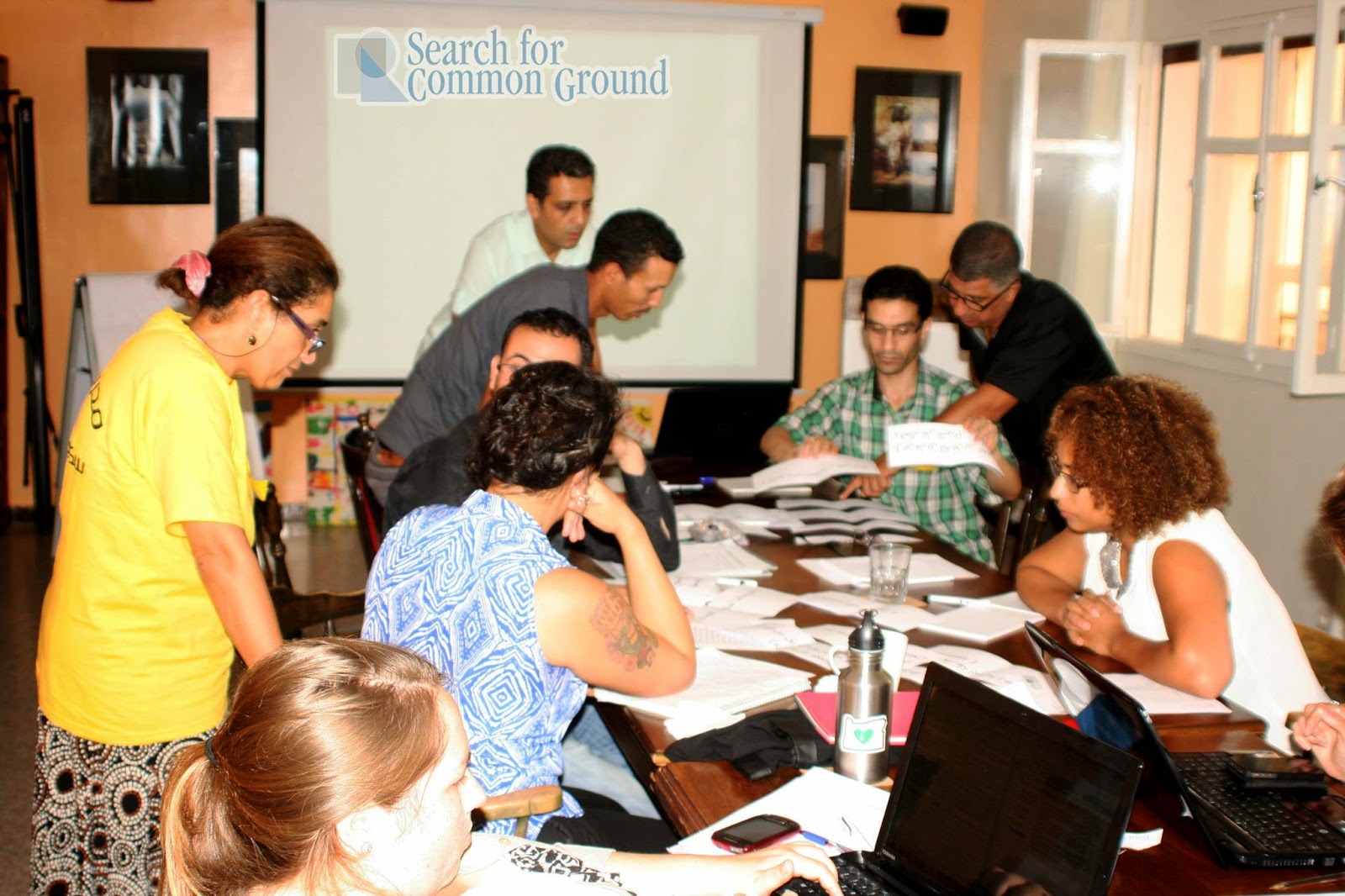“Nonviolent Communication shows us a way of being very honest, but without any criticism, without any insults, without any put-downs, without any intellectual diagnosis implying wrongness.”
-Marshall Rosenberg, Ph.D.
Author of Nonviolent Communication: A Language of Life
Is conflict always destructive? How can we consider conflict as an opportunity instead of a danger? How can we better manage differences in opinion and power among partnerships and community members? These questions, and more, were explored during a two-day training for Dar Si Hmad staff on Conflict Resolution by renowned international NGO Search for Common Ground (SFCG). SFCG works in over 30 countries from around the world and promotes peaceful resolution of conflict.
SFCG’s mission is to transform how individuals, organizations and governments manage conflict by helping conflicting parties understand their differences and act on their commonalities. This training session was part of a SFCG project entitled Everyone Gains: Promoting Women's Socio-Economic Empowerment, supported by the Middle East Partnership Initiative (MEPI).
We’d like to take a moment to share some main points that we learned from this informative training, and we hope that you too (as the reader) will be able to benefit from our comments and reflection.
Dar Si Hmad staff brainstorming the levels and causes of conflict within their own work environment
Instead, we must separate the person from the problem. Consider these two components that distinguish nonviolent actions from violent actions: First, one must not consider the other person or party as an enemy and second, one must not intend to make the other side suffer. To put it simply, one must view a conflict as such: “me and you vs. conflict,” rather than “me vs. you” or “me vs. conflict.” This perspective avoids the assumption that the other person IS the problem (while also preventing the difference to escalate to a stage of controversy or violence) and encourages individuals to react and manage their differences with peace and understanding.
Dar Si Hmad and SFCG staff engaging in an interactive "ice-breaker" activity
Dr. Marshall Rosenberg, often considered the “father of nonviolent communication,” has written extensively on how nonviolent communication encourages self-awareness and verbal expression, ultimately helping people to avoid conflict. Dr. Rosenberg guides us with tools for communication with others without guilt, judgement or violent emotion, teaching us how to grow long-lasting and mature relationships. One of the most important skills that we learned from Dr. Rosenberg’s work is how to listen to others with empathy. SFCG gave an excellent example of two animals, the crocodile and the giraffe. On the one hand, the crocodile, with its big mouth and small ears, is very good at talking and poor at listening. The giraffe, on the other hand, has a long neck able to rise above the situation in order to see the bigger picture, which leads to greater understanding of all perspectives involved.
Last but certainly not least, Dar Si Hmad staff learned about the positive effects of mediation. Mediation is a peaceful tool for conflict resolution because the presence of a neutral third party can help the two parties better understand the conflict, maintain a peaceful environment, and assist the parties in reaching a compromise that satisfies all. The main goal in mediation is to find a common ground that is mutually beneficial for all involved.
We at Dar Si Hmad are honored to have had the opportunity to work with Search for Common Ground and participate in their Conflict Resolution Training. The information we learned from the workshop has helped each of us to develop a greater sense of self-awareness and improved our communication both professionally and personally. We've all come to value the power of nonviolent communication and the importance of resolving conflicts peacefully, and we believe that these skills are contributing to a positive and inspiring work environment for Dar Si Hmad.
-Renda Nazzal, Ethnographic School Liaison & Manager
For more on this and related topics, consider reading:
- Marshall Rosenberg, Ph.D. Nonviolent Communication: A Language of Life. Encinitas, CA: Puddledancer Press. 2003.
- M. Scott Peck M.D. The Road Less Traveled: A New Psychology of Love, Traditional Values and Spiritual Growth. Simon & Schuster. 1978.
- Martin E.P. Seligman., Ph.D. Authentic Happiness: Using the New Positive Psychology to Realize You're Potential for Lasting Fulfillment. New York: Free Press. 2002.




